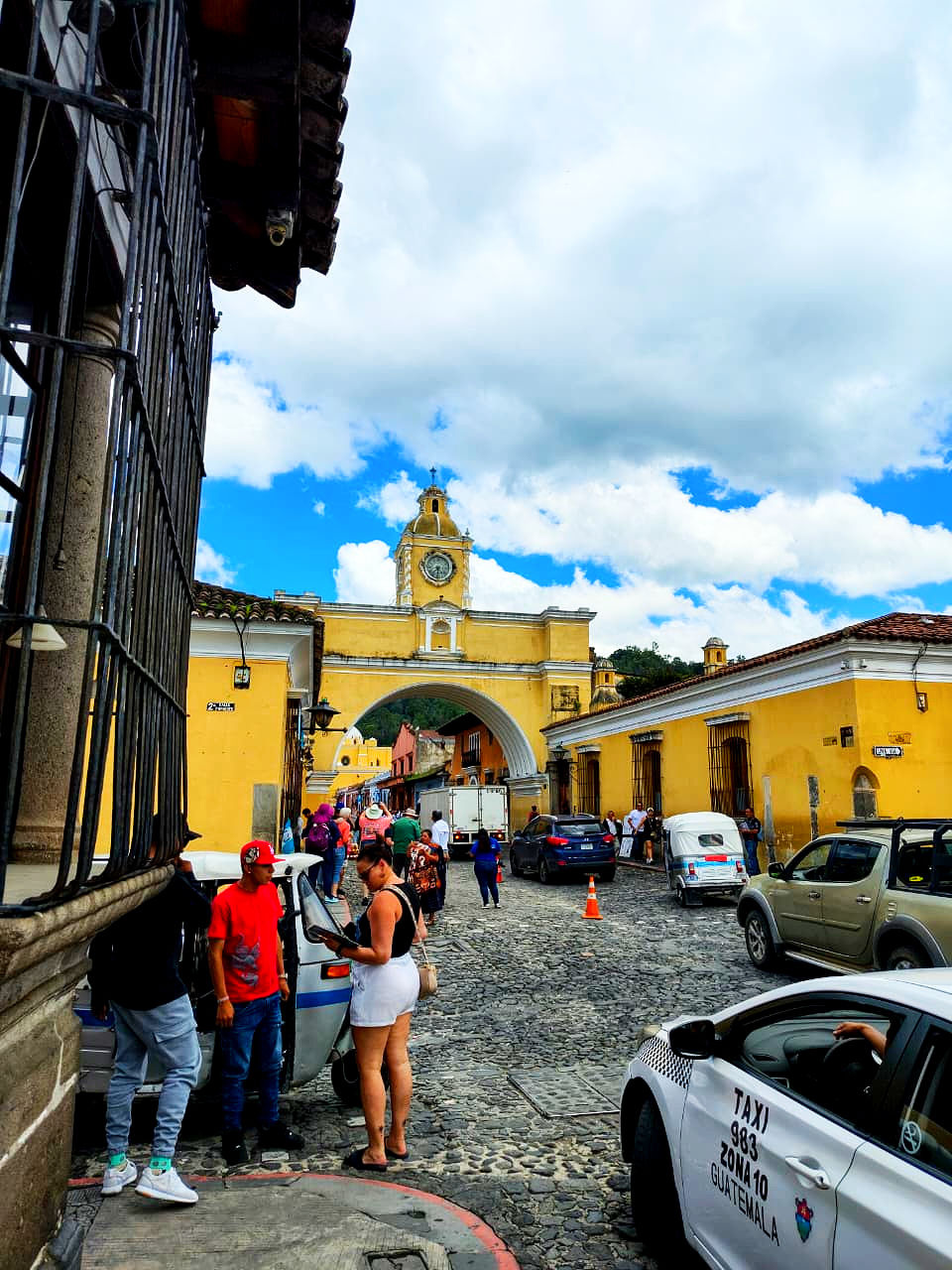Gali Visits the Iconic Arch of Antigua
- John Farnham
- 26 sept
- 2 Min. de lectura

After a few days exploring the beauty of Lake Atitlán and returning from her stay in Panajachel, Gali found herself back in Antigua. The shift from lakeside villages to cobblestone streets felt like stepping into another world—one filled with colonial charm, baroque churches, and the ever-present backdrop of volcanoes. At the heart of this historic city stood the landmark she was most eager to see again: the Santa Catalina Arch.
Walking through Antigua feels like stepping into a living museum. The cobblestone streets, pastel facades, and surrounding volcanoes create a city that blends natural beauty with colonial history. But perhaps no landmark captures this spirit more than the arch, Antigua’s most iconic symbol.

When Gali arrived at the arch, she immediately felt the sense of history it carries. Built in the 1690s, the arch was originally constructed to serve a practical purpose. At the time, the Santa Catalina Convent housed cloistered nuns who lived under strict vows of seclusion.
They needed to cross from their convent to a school located on the other side of the street without being seen by the public. The arch was the perfect solution—an enclosed passageway high above the road that allowed them to move between buildings discreetly.

Over the centuries, the arch has endured much. Antigua, once the capital of the Spanish colony of Guatemala, was shaken by several devastating earthquakes. While many structures collapsed, the Santa Catalina Arch survived, standing as a quiet witness to the city’s resilience. In the 19th century, a clock was added to the arch’s tower, giving it the iconic look it has today.
Gali loved how this one landmark holds so many layers of meaning. For the people of Antigua, it’s not just a tourist attraction—it’s a reminder of faith, community, and endurance. And for travelers, it’s a postcard-perfect view: the golden arch framing Volcán de Agua in the
background.

As Gali stood beneath the arch, she could imagine the nuns' hidden footsteps centuries ago passing quietly overhead. Today, the arch is anything but hidden—it’s the heart of the city, bustling with street vendors, artisans, and curious travelers from around the world.
For Gali, the Santa Catalina Arch wasn’t just a stop on her journey; it was a storybook page brought to life. A bridge of the past that continues to connect Antigua to its vibrant present.







Comentarios